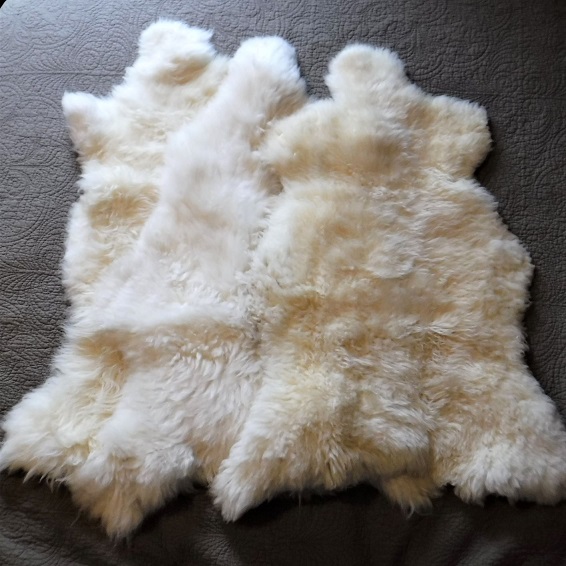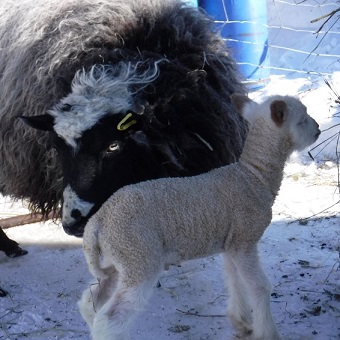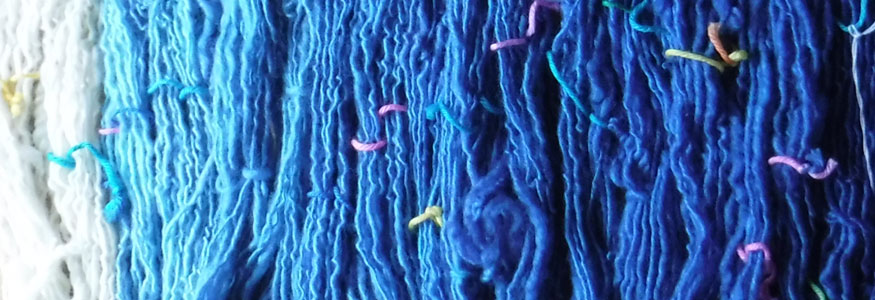
We keep a flock of about a dozen ewes, an assortment of different breeds of sheep suited to the climate of Ontario.
The sheep grow their fleece naturally and seasonally. Each ewe grows her own unique coat, as required for each winter. We shear our sheep when the warm weather makes their wool uncomfortable.
By keeping a flock of many and mixed breeds, the farm produces a variety of wools of many textures and colours.
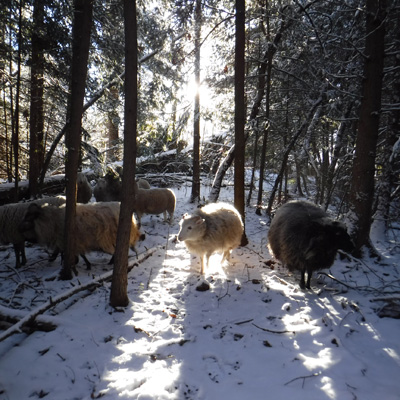
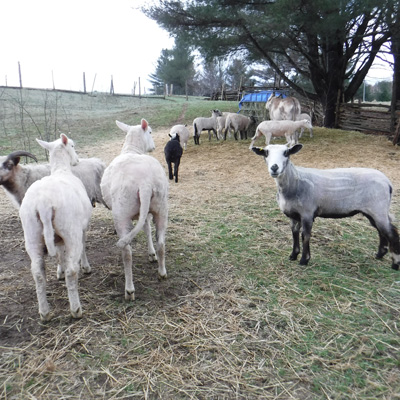
For more information about our wool and wool products, please email us at river(a)thistlecroft.ca
Wool is the general term used to refer to the sheared fibers from a sheep. In temperate climates around the world where sheep are raised, shepherds shear their sheep in the spring which makes the animals more comfortable as the weather warms, while providing the farms another source of income from the wool.
In fact, the economies of many early European nations were built by wool. England and her monarchy was made by sheep. By the end of the 13th century, there were an estimated 5 million sheep across the island nation, with most of the raw wool sold and shipped to Flanders to feed the looms of Bruges, Ghent and Ypres. A century later during the reign of Henry V, almost 63% of the Crown's income came from the tax on wool! Likewise, the famous Medici family of Florence built their wealth and banking system on their woolen textile industry; all overseen by the Arte della Lana: the Wool Guild.
The main difference between wool and hair and/or fur, is its elasticity and its crimp. Technically, hair, fur and wool are all made of keratin (a type of protein, also the main material in human nails, animal horns and hooves) and are produced by follicles in the skin of mammals. There are many breeds of 'hair sheep' such as the Katahdin, Dorper and Barbados Blackbelly, that shed their fleece, eliminating the need for shearing.
The characteristics of wool varies from breed to breed. However, most sheep actually exhibit three different types of wool: 'wool' or the down/inner-coat, the guard-hair or outer-coat and 'kemp' fibers. Guard-hair are long, relatively straight, strong and coarse. Their purpose is to help the sheep shed water (rain and snow). These hairs have hollow, air-filled cells that resist moisture (referred to as medulla cells). Kemp hairs are similar to guard hairs as they are also hollow, thick but shorter. Their purpose is to help the fleece stay 'fluffy' and to prevent the fleece from packing down. Some breeds of sheep, like the famous Merino, have no medulla fibers in their fleece at all!
What we refer to as wool is the undercoat. These fibers are soft, often feature a crimp (waviness) and is much finer than the outer-coat. The crimp refers to the waviness of wool but on closer inspection, this 'waviness' is actually a coiled spiral. This structure of wool is what allows wool to be stretched and when released, return to their original length (elasticity). It is this coiled spiral structure (crimp) of wool that allows it to be spun into yarn! Likewise, the higher the crimp frequency, the better the fiber felts.
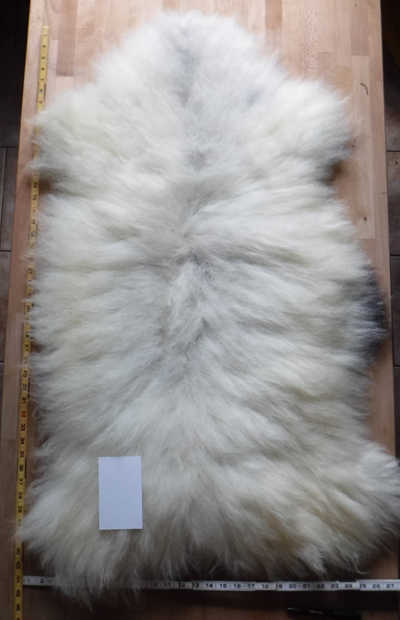
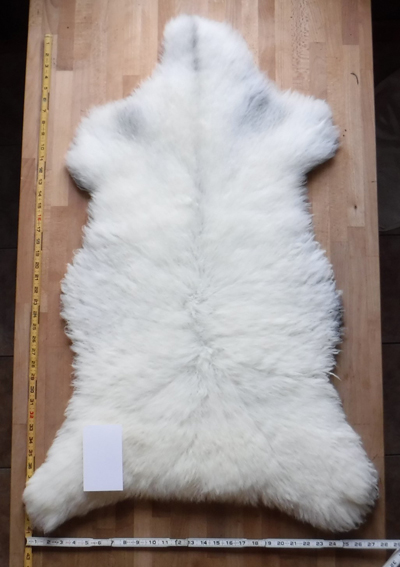
View and purchaseSheepskins >>
Along with the crimp of wool, the actual surface structure of each fiber of wool is what allows it to be felted. Each fiber is made of tiny, overlapping scales - similar to shingles on a roof. The size and regularity of these scales vary based on breed. Generally, the more scales each fiber has, the better (easier) it felts. Other hair fibers also have scales but they do not naturally exhibit the jagged edges of wool scale (known as serrations). Hair of dogs, rabbits and beavers can be felted, but require chemical solutions to loosen the scales of these fibers.
History of Felting
Felt from wool is one of the oldest known man-made textiles. Many cultures share similar legends on the origin of felt making. Europeans celebrate St. Clement's Day, honouring the patron saint of hatters (November 23) whose legend has it that while the French monk was on a long journey, he would pluck wool off branches (or even off sheep) and stuff it in his sandals to give himself some cushioning. By the end of this journey, he had discovered that the wool had matted into a strong and comfortable fabric (from the agitation of his movement/walking and his sweat). Sumerian legends tell a similar story.
According to the archaeological record, the oldest evidence of felted objects comes from Anatolia (Turkey) in the Neolithic city of Catal Huyuk (6500 BCE). Other items have been discovered all over areas of Central Asia - from Siberia across to Northern Mongolia. Items found include hats, boots, coats, saddles, blankets, wall hangings, cushions, masks and jewelry. It is in Eurasia that nomadic cultures of sheep herders (and camels) still use felt in all types of clothing and more iconically, in the cover of the ger (yurt).
Modern Uses of Felt
Felt was most commonly used as the main material for hats (Bowler hats) and boot liners. Within industry, felt is frequently used as a sound or vibration damper, for air filtration and in machinery for cushioning and padding moving parts. Similarly, felt is used in many musical instruments to help dampen sound (cymbals) or as striking material (piano hammers). And of course, felt is used in many arts and craft projects.
What is Felt?
Felt is a textile material often made by the matting of wool fibers through agitation/friction, heat and/or pressure. There are two main ways to make felt: wet felting and needle felting.
Wet felting uses hot water that is applied to layers of wool which is then agitated and compressed, thus causing the fibers to hook together into a single piece of fabric. Needle felting uses specially designed needles with angled notches along the shaft that catch fibers and tangle them together to produce felt. This method tends to produce three dimensional objects as well as two dimensional tapestries and the such.
